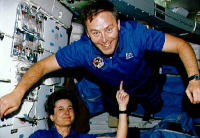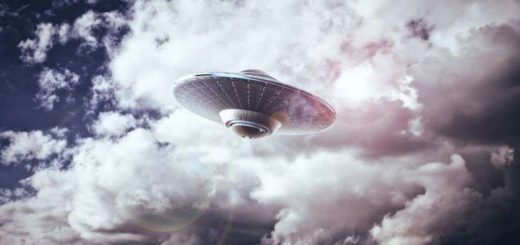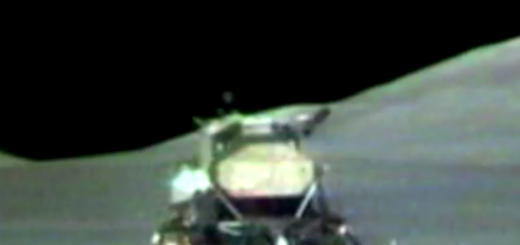How Weightlessness Works

We have often seen pictures of astronauts floating around inside the space shuttle, International Space Station or Mir. While weightlessness looks like fun, it places great demands on your body. Initially, you feel nauseated, dizzy and disoriented. Your head and sinuses swell and your legs shrink. In the long term, your muscles weaken and your bones become brittle. These effects on your body could do severe damage on a long voyage, such as a trip to Mars.
In this edition of HowStuffWorks, we’ll take you on an extended journey aboard the International Space Station, where we will examine what weightlessness is, what happens to your body, how these changes come about and what can be done to prevent or reverse these adverse effects.
Imagine that you are dressed in your space suit and lying on your back in the flight deck of the space shuttle. You have been on your back in the chair for several hours as the pilots and mission control have gone through the preflight launch preparations. Normally, when you’re standing upright, gravity pulls blood downward so it pools in the veins of your legs. However, because you’ve been lying on your back, the blood is distributed differently through your body, shifting slightly toward your head because your feet are elevated. Your head may feel a little stuffy, much like it does at night when you sleep.
The rocket engines fire and you feel the acceleration. You get pushed back into your seat as the shuttle ascends. You feel heavy as the G-forces of the shuttle’s acceleration increase to up to three times normal gravity (some roller coaster rides can achieve this level of acceleration). Your chest feels compressed and you may have some difficulty breathing. In about 8 and a half minutes, you are in outer space, experiencing an entirely different sensation: weightlessness.
Weightlessness is more correctly termed microgravity. You are not actually weightless, because the Earth’s gravity is holding you and everything in the shuttle in orbit. You are actually in a state of free-fall, much like jumping from an airplane except that you are moving so fast horizontally (5 miles per second or 8 kilometers per second) that, as you fall, you never touch the ground because the Earth curves away from you. It’s like this: When you stand on a bathroom scale, it measures your weight because gravity pulls down on you and the scale. Because the scale is resting on the ground, it pushes up on you with an equal force — this equal force is your weight. However, if you were to jump off a cliff while standing on a bathroom scale, both you and the scale would be pulled down equally by gravity. You would not push on the scale and it would not push back against you. Therefore, your weight would read zero.
Because the shuttle and all of the objects in it are falling around the world at the same rate, everything in the shuttle that is not secured floats. If you have long hair, it floats around your face. If you pour a glass of water out, it assumes a large, spherical drop that you can break up into separate, smaller drops (see this page for information on liquid surface tension). Food and candy gently float to your mouth if you push them in that direction. While sitting in your seat, you have no sense that you are seated because your body does not press against the seat. If you are not secured to something, you float. Furthermore, if you cannot reach a wall or hand/foot-hold, you cannot move from your position because you have nothing to push against. For this reason, NASA has placed many restraints, hand-holds and foot-holds throughout the cabin of the shuttle.
When you first encounter microgravity, you have the following feelings:
Nausea
Disorientation
Headache
Loss of appetite
Congestion
The longer you stay in microgravity, the more your muscles and bones weaken.
These sensations are caused by changes in various systems of your body. Let’s take a closer look at how your body responds.
Spacesick
The nausea and disorientation that you feel are like that sinking feeling in your stomach when your car hits a dip in the road or you experience a drop on a roller coaster ride, only you have that feeling constantly for several days. This is the feeling of space sickness, or space motion sickness, which is caused by conflicting information that your brain receives from your eyes and the vestibular organs located in your inner ear. Your eyes can see which way is up and down inside the shuttle. However, because your vestibular system relies on the downward pull of gravity to tell you which way is up versus down and in which direction you are moving, it does not function in microgravity. So your eyes may tell your brain that you are upside-down, but your brain does not receive any interpretable input from your vestibular organs. Your confused brain produces the nausea and disorientation, which in turn may lead to vomiting and loss of appetite. Fortunately, after a few days, your brain adapts to the situation by relying solely on the visual inputs, and you begin to feel better. NASA has issued medication patches to help astronauts deal with the nausea until their bodies adapt.
Puffy Face and Bird Legs
In microgravity, your face will feel full and your sinuses will feel congested, which may contribute to headaches as well as space motion sickness. You feel the same way on Earth when you bend over or stand upside down, because blood rushes to your head.
This content is not compatible on this device.
Shifts in your blood and bodily fluids upon exposure to micro-gravity
On Earth, gravity pulls on your blood, causing significant volumes to pool in the veins of your legs. Once you encounter microgravity, the blood shifts from your legs into your chest and head. Your face tends to get puffy and your sinuses swell, as shown below. The fluid shift also shrinks the size of your legs.
When the blood shifts to the chest, your heart increases in size and pumps more blood with each beat. Your kidneys respond to this increased blood flow by producing more urine, much like they do after you drink a large glass of water. Also, the increase in blood and fluid decreases anti-diuretic hormone (ADH) secretion by the pituitary gland, which makes you less thirsty. Therefore, you do not drink as much water as you might on Earth. Overall, these two factors combine to help rid your chest and head of the excess fluid, and in a few days, your body’s fluid levels are less than what they were on Earth. Although you still have a slightly puffy head and stuffy sinuses, it is not as bad after the first couple of days. Upon your return to Earth, gravity will pull those fluids back down to your legs and away from your head, which will cause you to feel faint when you stand up. But you will also begin to drink more, and your fluid levels will return to normal in a couple of days.
Space Anemia
As your kidneys eliminate the excess fluid, they also decrease their secretion of erythropoietin, a hormone that stimulates red blood-cell production by bone marrow cells. The decrease in red blood-cell production matches the decrease in plasma volume so that the hematocrit (percentage of blood volume occupied by red blood cells) is the same as on Earth. Upon your return to Earth, your erythropoietin levels will increase, as will your red blood-cell count.
Weak Muscles
When you are in microgravity, your body adopts a “fetal” posture — you crouch slightly, with your arms and legs half-bent in front of you. In this position, you do not use many of your muscles, particularly those muscles that help you stand and maintain posture (anti-gravity muscles). As your stay aboard the International Space Station lengthens, your muscles change. The mass of your muscles decreases, which contributes to the “bird leg” appearance. The muscle fiber types change from slow-twitch to fast-twitch. Your body no longer needs slow-twitch endurance fibers, such as those used in standing. Instead, more fast-twitch fibers are needed as you push yourself quickly off of space station surfaces. The longer you stay on the station, the less muscle mass you will have. This loss of muscle mass makes you weaker, presenting problems for long-duration space flights and upon returning home to Earth’s gravity.
Brittle Bones
On Earth, your bones support the weight of your body. The size and mass of your bones are balanced by the rates at which certain bone cells (osteoblasts) lay down new mineral layers and other cells (osteoclasts) chew up those mineral layers. In microgravity, your bones do not need to support your body, so all of your bones, especially the weight-bearing bones in your hips, thighs and lower back, are used much less than they are on Earth. In these bones, the rate at which your osteoblasts deposit new bone layers is reduced (no one knows exactly why, though it is thought that changes in force and stress are somehow involved), while the rate at which osteoclasts chew up bone stays the same. The result is that the size and mass of these bones continue to decrease as long as you remain in microgravity, at a rate of approximately 1 percent per month. These changes in bone mass make your bones weak and more likely to break upon your return to Earth’s gravity. It is not known how much of the bone loss is recoverable upon return to Earth, although it is probably not 100 percent. These changes in bones may limit the duration of space flights. More research is needed in this area.
In addition to weak bones, your blood’s calcium concentration increases slightly as your bones get chewed up by osteoclasts. Your kidneys must get rid of the excess calcium, which makes them susceptible to forming painful kidney stones.



 Creators of mankind
Creators of mankind Description of “Tall white aliens”
Description of “Tall white aliens” Where they came from?
Where they came from? About hostile civilizations
About hostile civilizations The war for the Earth
The war for the Earth “Tall white aliens” about eternal life
“Tall white aliens” about eternal life Video: “Nordic aliens”
Video: “Nordic aliens” Aliens
Aliens Alien encounters
Alien encounters The aliens base
The aliens base UFO
UFO Technology UFO
Technology UFO Underground civilization
Underground civilization Ancient alien artifacts
Ancient alien artifacts Military and UFO
Military and UFO Mysteries and hypotheses
Mysteries and hypotheses Scientific facts
Scientific facts


















